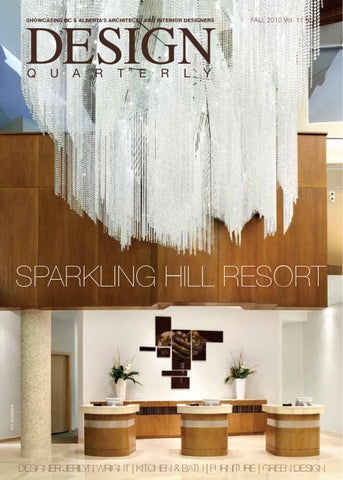Showcasing BC & Alberta’s architects and interior designers
Q
U
A
R
T
E
R
L
FALL 2010 Vol. 11 No.2
Y
PM 40063056
sparkling hill resort
Designer Jerilyn Wright | Kitchen & Bath | Furniture | Green Design

Showcasing BC & Alberta’s architects and interior designers
Q
U
A
R
T
E
R
L
FALL 2010 Vol. 11 No.2
Y
PM 40063056
sparkling hill resort
Designer Jerilyn Wright | Kitchen & Bath | Furniture | Green Design